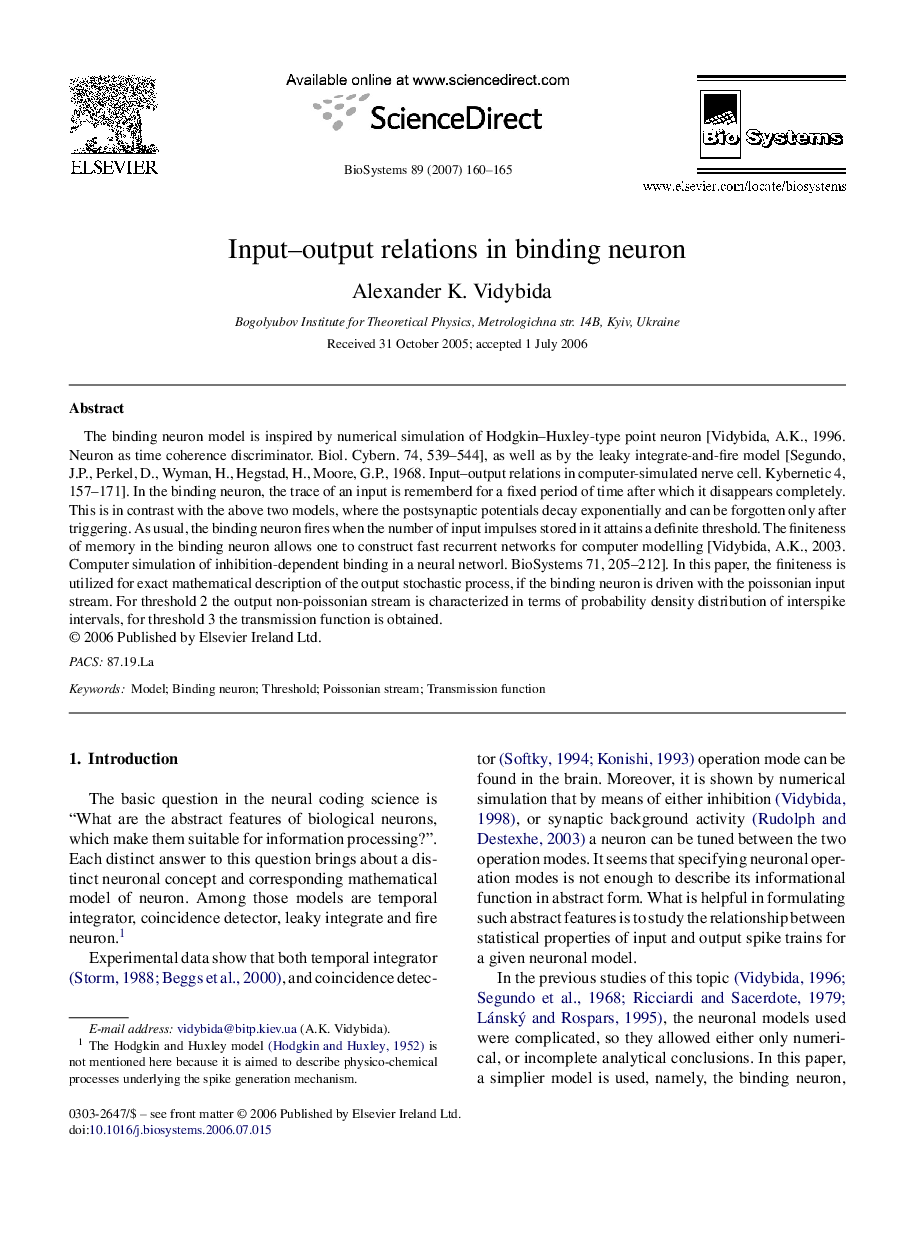| Article ID | Journal | Published Year | Pages | File Type |
|---|---|---|---|---|
| 2077153 | Biosystems | 2007 | 6 Pages |
The binding neuron model is inspired by numerical simulation of Hodgkin–Huxley-type point neuron [Vidybida, A.K., 1996. Neuron as time coherence discriminator. Biol. Cybern. 74, 539–544], as well as by the leaky integrate-and-fire model [Segundo, J.P., Perkel, D., Wyman, H., Hegstad, H., Moore, G.P., 1968. Input–output relations in computer-simulated nerve cell. Kybernetic 4, 157–171]. In the binding neuron, the trace of an input is rememberd for a fixed period of time after which it disappears completely. This is in contrast with the above two models, where the postsynaptic potentials decay exponentially and can be forgotten only after triggering. As usual, the binding neuron fires when the number of input impulses stored in it attains a definite threshold. The finiteness of memory in the binding neuron allows one to construct fast recurrent networks for computer modelling [Vidybida, A.K., 2003. Computer simulation of inhibition-dependent binding in a neural networl. BioSystems 71, 205–212]. In this paper, the finiteness is utilized for exact mathematical description of the output stochastic process, if the binding neuron is driven with the poissonian input stream. For threshold 2 the output non-poissonian stream is characterized in terms of probability density distribution of interspike intervals, for threshold 3 the transmission function is obtained.
